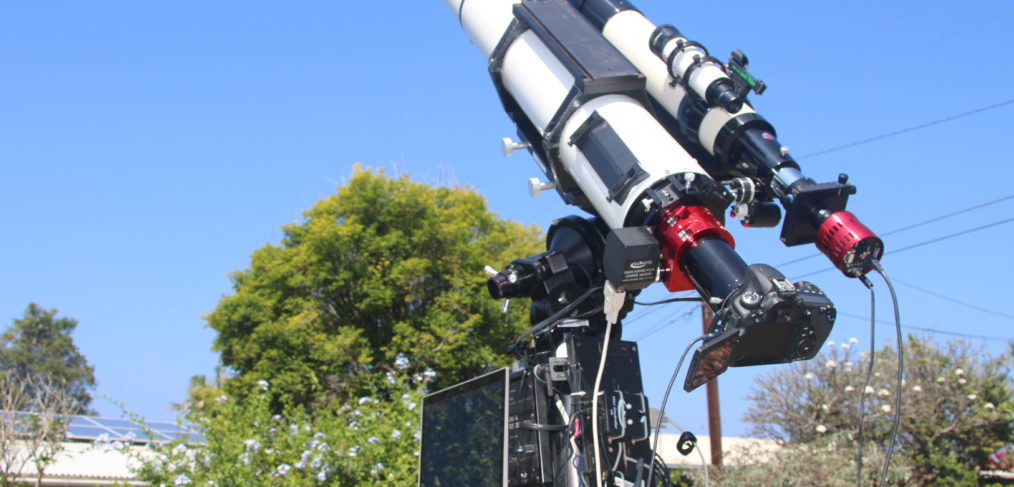A new Telescope needs to be properly setup to perform successfully. Unlike binoculars, you cannot just point a new telescope in the general direction and be able to find what you are looking for unless everything has been properly aligned. Here’s some tips to help you have a successful start to the hobby of astronomy.… Continue Reading Tips for Setting Up a New Telescope
After casually viewing the sky with your telescope, the next urge is to take pictures – Astrophotography. A camera, telescope, suitable mount, and software to process images are the key requirements to do astrophotography. Digital cameras are rapidly improving. Cell phone cameras are adequate for Moon, Venus, Jupiter and Saturn images. But, most other deep… Continue Reading Astrophotography – the next step in Astronomy
Galaxy viewing is a tough Challenge Early astronomers described the dim fuzzy objects we now call a Galaxy as Nebulosity – cloud like apparitions. They looked like the glow of the Milky Way. Nebulae had few discernible features other than being dimly visible and literally milky, in Greek, a Galaxy. Galaxies were theorized to be… Continue Reading Galaxy Viewing – Seeing at Extreme Distances
NGC 2264 The Christmas Tree Cluster is an open cluster with nebulosity. It is located in the constellation of Monoceros near the feet of Gemini. It spans 30 light years in height and is 2,600 light years away. In small and medium sized telescopes, it dominates the field of view of 50x to 100x magnification. … Continue Reading NGC 2264 the Christmas Tree Cluster
Located about 3,600 light years away in Orion is the open star cluster NGC 2169 – The “37” Cluster. Commonly called the “37” Cluster or “The Hitchhiker’s Guide Cluster” from its appearance as letters or numbers written in the stars. As with all open star clusters, the stars are arranged in random patterns. On casual… Continue Reading NGC 2169 – The “37” Cluster
In 1764 Charles Messier published the first installment of his famous list. M1 to M45 was in this partial list. M35 is the object of interest for this blog post. In his small telescope, it first appeared to be a misty patch. Upon greater magnification it resolved into many stars. This open star cluster was… Continue Reading Observing Open Star Cluster Messier 35 – M35
When looking through a telescope what is better, naked eye or corrective Eye Glasses? My usual answer is to keep your corrective Eye Glasses on. Corrective / Prescription Eye Glasses correct for distance and astigmatism. All images in a telescope are at infinity. The telescope can be focused to compensate for individual distance vision differences.… Continue Reading Telescopes and Corrective Eye Glasses
Novices to amateur Astronomy are confronted early on with mysterious Messier, NGC, IC Catalogs alpha-numeric designations for the various deep sky wonders marked on star maps. Marked prominently on star charts are the Messier, NGC, IC Catalogs designations. These are the catalogs compiled by Charles Messier (1720-1817) (M-Objects) and John L.E. Dreyer (1852-1926) (NGC-Objects and… Continue Reading Messier, NGC, IC Catalogs : Keys to the Universe
Albert Einstein published his Theory of General Relativity in 1915. In his revolutionary Theory of Relativity he broke away from Newtonian Physics and fused space, time, matter and energy into an inseparable malleable continuum with the speed of light as an absolute. Newton had the physical meter and the temporal second as absolute immutable constants. … Continue Reading Relativity is Over 100 Years Old and Still Going Strong
Astronomers have conquered the Earths atmosphere’s blurring effects on views of the Universe with Laser Guide Star Adaptive Optics. In visible and near infrared wavelengths, Laser Guide Star Adaptive Optics has proven to be effective at neutralizing the blurring effect of the ocean of air that is above our telescopes. Previously, we were limited to… Continue Reading Laser Guide Star Adaptive Optics










